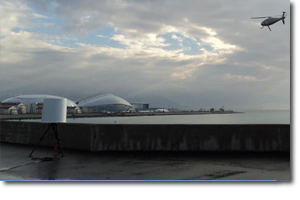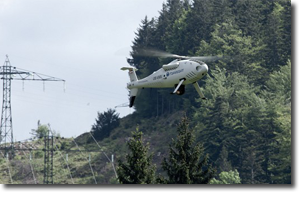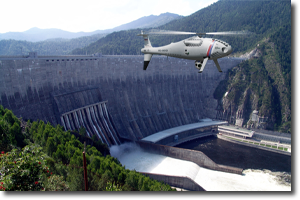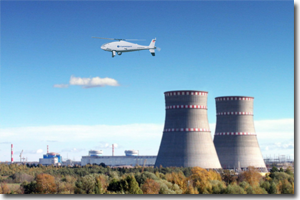Unmanned Aerial Complex Gorizont Air S-100 ····························································
····························································
The helicopter is developed as Vertical Take-off and Landing (VTOL) vehicle, eliminating the need for a runway and ground aircraft equipment. It can be fitted with a wide variety of payloads (up to 50 kg) tailored to meet diverse user requirements and tasks.
Application areas:
- Day & Night Surveillance.
- Area & Event Security.
- Maritime Security.
- Precision Survey & Mapping.
- Environmental monitoring - environmental disasters of natural and technological origin (fire, oil spill, oil and gas pipelines breakout and etc.).
- Search and rescue mission in case of emergency situations.
Optional payloads/configuration depending on task and application area: - Stabilized day/night gimbals.
- Stabilized day/night gimbals.
- Synthetic Aperture Radar (SAR).
- Light Detection and Ranging (LIDAR).
- Multi-Spectral Imaging.
- Ground Penetrating Radar (GPR).
Autonomous: fully autonomous takeoff, waypoint navigation and landing.
Guidance and flight control modules perform map fixation and determine S-100 location in real-time on the digital chart of mission control screen corresponding to control panel with integrated reference data. Payload control work station allows the operator to perform continuous monitoring of particular indicators on the basis of flight mission data, video and photographic works.
In case of loss of control link, an automatic home point recovery function is activated.
Integration with: - IV level element of automated system for technical monitoring "Rubezh".
- IV level element of automated system for technical monitoring "Rubezh".
- Adaptation to any automated systems of data acquisition and exploitation.
Navigation: redundant Inertial and Geographic Information (INS and GPS/GLONASS) Navigation Systems ensure highly accurate navigation and flight stability. The piloting information and flight control data are displayed on the mission control screen on operator's workstation.
Data/video image transmission: fully digital, compressed video image (up to 4 parallel video channels) is transmitted in real-time from optical-electronic module to the ground control station and displayed on the mission control screen on operator's workstation.
Robust and reliable: module construction with faceted fuselage is manufactured of strong and light material – composite carboniferous fiber "Monokok"; engine – of high-strength titanium and aluminum. The mechanical design has focused on reducing the number of limited-lifetime parts to a bare minimum.
module construction with faceted fuselage is manufactured of strong and light material – composite carboniferous fiber "Monokok"; engine – of high-strength titanium and aluminum. The mechanical design has focused on reducing the number of limited-lifetime parts to a bare minimum.
Capable and configurable: it features two payload bays, side hard points and an internal auxiliary electronics bay such as aircraft identification radar system (transponder), Automatic Collision Avoidance System (ACAS) and etc. The primary payload bay, located directly beneath the main rotor shaft, is capable of mounting payloads weighing up to 50 kg.
Networkable:
LAN interface acts as highly reliable hub between ground components and provides an Ethernet link to higher-level networks for disseminating payload data.